Christopher alexander - A pattern language
Здесь есть возможность читать онлайн «Christopher alexander - A pattern language» весь текст электронной книги совершенно бесплатно (целиком полную версию без сокращений). В некоторых случаях можно слушать аудио, скачать через торрент в формате fb2 и присутствует краткое содержание. Жанр: Прочая научная литература, на английском языке. Описание произведения, (предисловие) а так же отзывы посетителей доступны на портале библиотеки ЛибКат.
- Название:A pattern language
- Автор:
- Жанр:
- Год:неизвестен
- ISBN:нет данных
- Рейтинг книги:3 / 5. Голосов: 1
-
Избранное:Добавить в избранное
- Отзывы:
-
Ваша оценка:
- 60
- 1
- 2
- 3
- 4
- 5
A pattern language: краткое содержание, описание и аннотация
Предлагаем к чтению аннотацию, описание, краткое содержание или предисловие (зависит от того, что написал сам автор книги «A pattern language»). Если вы не нашли необходимую информацию о книге — напишите в комментариях, мы постараемся отыскать её.
A pattern language — читать онлайн бесплатно полную книгу (весь текст) целиком
Ниже представлен текст книги, разбитый по страницам. Система сохранения места последней прочитанной страницы, позволяет с удобством читать онлайн бесплатно книгу «A pattern language», без необходимости каждый раз заново искать на чём Вы остановились. Поставьте закладку, и сможете в любой момент перейти на страницу, на которой закончили чтение.
Интервал:
Закладка:
IO58
225 FRAMES as thickened
EDGES**
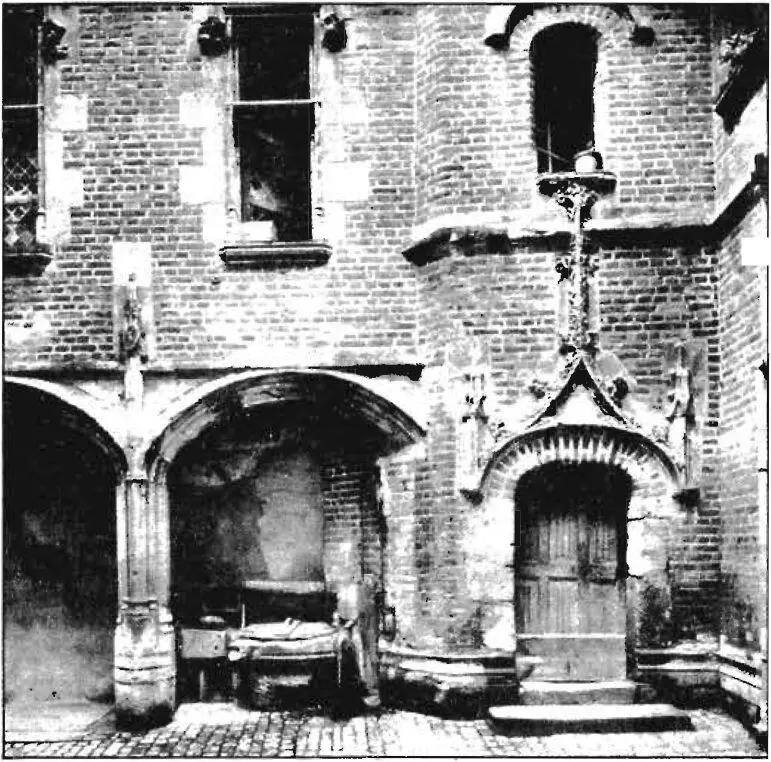
I0S9
. . . assume that columns and beams are in and that you have marked the exact positions of the doors and windows with string or pencil marks—natural doors and windows (221). You are ready to build the frames. Remember that a well made frame needs to be continuous with the surrounding wall, so that it helps the building structurally—efficient structure (206), GRADUAL STIFFENING (208).
• 5* * 5* * 5*
Any homogeneous membrane which has holes in it will tend to rupture at the holes, unless the edges of the holes are reinforced by thickening.
The most familiar example of this principle at work is in the human face itself. Both eyes and mouth are surrounded by extra bone and flesh. It is this thickening, around the eyes and mouth, which gives them their character and helps to make them such important parts of human physiognomy.
A building also has its eyes and mouth: the windows and the doors. And following the principle which we observe in nature, almost every building has its windows and doors elaborated, made more special, by just the kind of thickening we see in eyes and mouths.
The fact that openings in naturally occurring membranes are invariably thickened can be easily explained by considering how the lines of force in the membrane must flow around the hole.
 |
| T he density of the lines ref resent increasing stress concentrations. |
The increasing density of lines of force around the perimeter of the hole requires that additional material be generated there to prevent tearing.
Consider a soap film. When you prick the film, the tension pulls the film apart, and it disintegrates. But if you insert a ring of string into the film, the hole will hold, because the tensile forces which accumulate around the opening can be held by the thicker ring. This is in tension. The same is true for buckling and compression. When a thin plate is functioning in compression and a hole is made in it, the hole needs stiffening. It is important to recognize that this stiffening is not only supporting the opening itself against collapse, but it is taking care of the stresses in the membrane which would normally be distributed in that part of the membrane which is removed. Familiar examples of such stiffening in plates are the lips of steel around the portholes in a ship or in a locomotive cab.
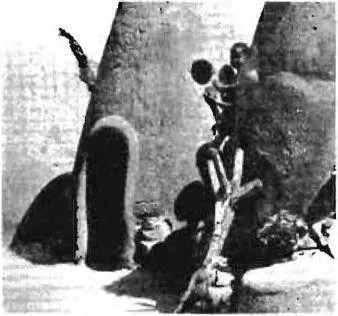 |
| A door frame as a thickening. |
The same is true for doors and windows in a building. Where the walls are made of wood planks and lightweight concrete fill—see wall membranes (218)—the thickened frames can be made from the same wood planks, placed to form a bulge, and then filled to be continuous with the wall. If other types of skin are used in the wall membranes, there will be other kinds of thickening: edges formed with chicken wire, burlap, and resin, filled with concrete; edges formed with chicken wire filled with rubble, and then mortar, plaster; edges formed with brick, filled, then plastered.
1061
More general examples of frames as thickened edges exist all over the world. They include the thickening of the mud around the windows of a mud hut, the use of stone edges to the opening in a brick wall because the stone is stronger, the use of double studs around an opening in stud construction, the extra stone around the windows in a gothic church, the extra weaving round the hole in any basket hut.
Therefore:
Do not consider door and window frames as separate rigid structures which are inserted into holes in walls. Think of them instead as thickenings of the very fabric of the wall itself, made to protect the wall against the concentrations of stress which develop around openings.
In line with this conception, build the frames as thickenings of the wall material, continuous with the wall itself, made of the same materials, and poured, or built up, in a manner which is continuous with the structure of the wall.
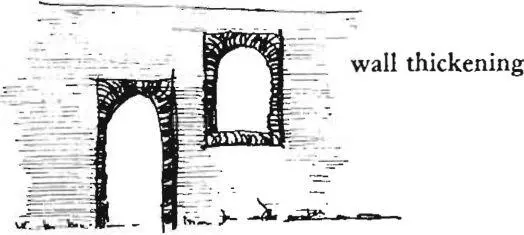
In windows, splay the thickening, to create deep reveals (223) ; the form of doors and windows which will fill the frame, is given by the later patterns—windows which open wide (236), SOLID DOORS WITH GLASS (237), SMALL PANES (239). . . .
as you build the main jrame and its openings yput in the following subsidiary patterns where they are appropriate;
226.COLUMN PLACE
227. COLUMN CONNECTION
228. STAIR VAULT
229. DUCT SPACE
230. RADIANT HEAT
231. DORMER WINDOWS
232. ROOF CAPS
IO63
| 226 COLUMN PLACE* |
|---|
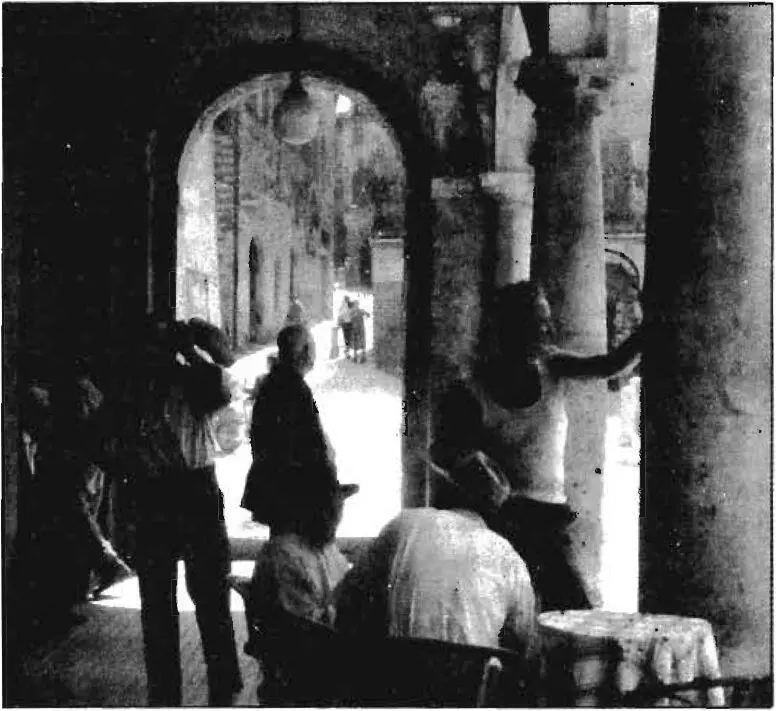 |
1064
. . . certain columns, especially those which are free standing, play an important social role, beyond their structural role as columns at the corners (212). These are, especially, the columns which help to form arcades, galleries, porches, walkways, and outdoor rooms—public outdoor room (69), arcades (lI9), OUTDOOR ROOM (163), GALLERY SURROUND ( 166), SIX-foot balcony (167), trellised walk (174). This pattern defines the character these columns need to make them function socially.
♦ * •
Thin columns, spindly columns, columns which take their shape from structural arguments alone, will never make a comfortable environment.
The fact is, that a free-standing column plays a role in shaping human space. It marks a point. Two or more together define a wall or an enclosure. The main function of the columns, from a human point of view, is to create a space for human activity.
In ancient times, the structural arguments for columns coincided in their implications with the social arguments. Columns made of brick, or stone, or timber were always large and thick. It was easy to make useful space around them.
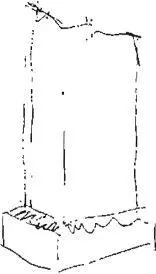
A big thick column.
But with steel and reinforced concrete, it is possible to make a very slender column; so slender that its social properties disap-
1065
I I LOCAL TRANSPORT AREAS
treated as a “second vehicle”—and are rather expensive. They make no contribution to the health problem, since people are still sitting motionless while they travel. The system is relatively antisocial, since people are still encapsulated in “bubbles” while they travel. It is highly idealistic, since it works if everyone has a Starrcar, but makes no allowance for the great variety of movement which people actually desire, i.e., bikes, horses, jalopies, old classic cars, family buses.
We propose a system which has the advantages of the Starrcar system but which is more realistic, easier to implement, and, we believe, better adapted to people’s needs. The essence of the system lies in the following two propositions:
Читать дальшеИнтервал:
Закладка:
Похожие книги на «A pattern language»
Представляем Вашему вниманию похожие книги на «A pattern language» списком для выбора. Мы отобрали схожую по названию и смыслу литературу в надежде предоставить читателям больше вариантов отыскать новые, интересные, ещё непрочитанные произведения.
Обсуждение, отзывы о книге «A pattern language» и просто собственные мнения читателей. Оставьте ваши комментарии, напишите, что Вы думаете о произведении, его смысле или главных героях. Укажите что конкретно понравилось, а что нет, и почему Вы так считаете.












